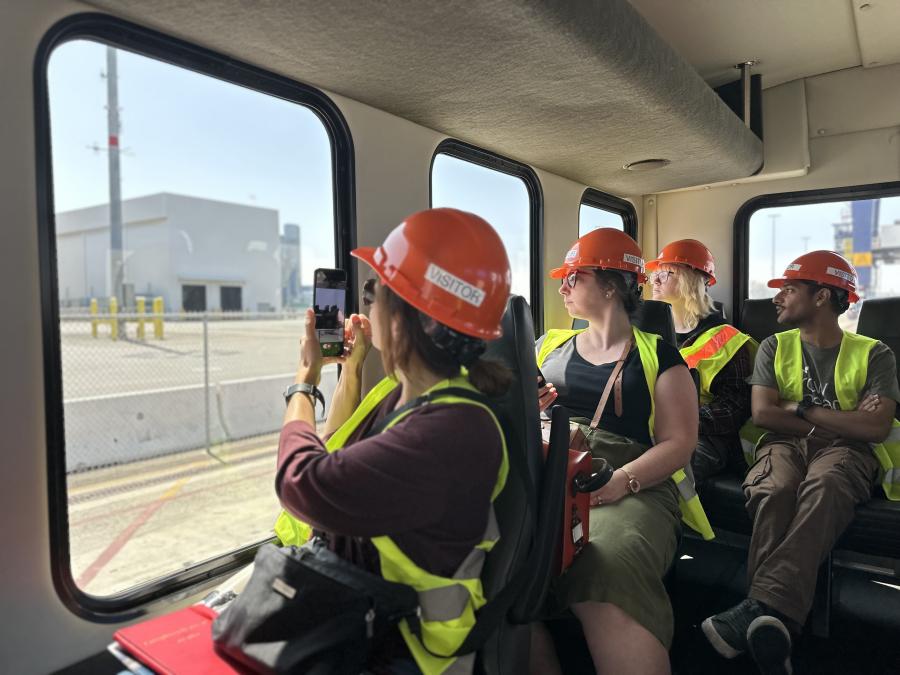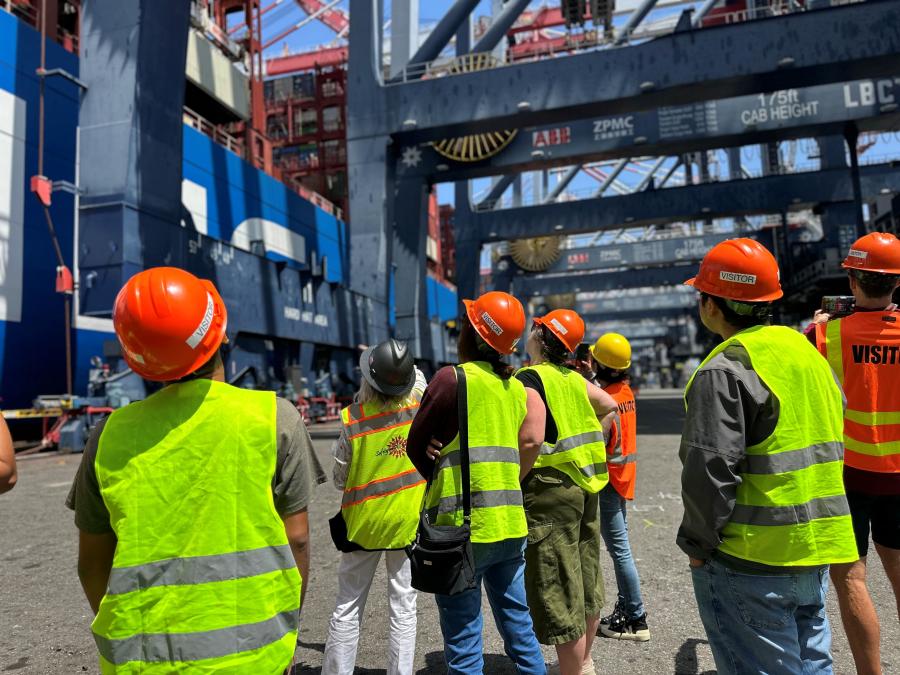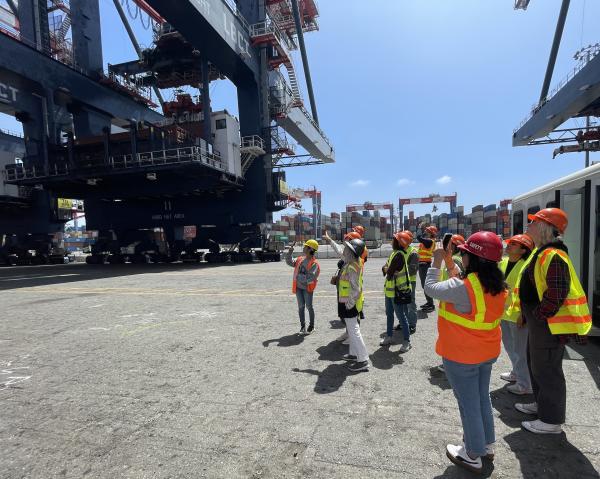Discovering Sustainability at the Long Beach Container Terminal
In July, the Office of Sustainability along with members of the Sustainability Champions program and Sustain U took a trip to the Long Beach Container Terminal (LBCT) at the Port of Long Beach. The purpose of the trip was to learn about the sustainability efforts that are embedded into LBCT’s operations, making it one of the greenest shipping terminals in the world. The field trip began with a presentation by Dr. Bonnie Nixon, the Sustainability Director at LBCT, who shared the history of the terminal as well as information about the innovative measures and technologies LBCT has implemented to significantly reduce their greenhouse gas emissions and environmental impacts. Dr. Nixon also shared about the efforts LBCT has made to connect with the surrounding communities to create genuine partnerships and address environmental justice issues.


After the presentation, Dr. Nixon drove a shuttle filled with the CSULB visitors around the terminal for an up-close tour. During the tour, Dr. Nixon described the sustainability-focused upgrades that have been made at the terminal including:
- Upgrading old vehicles to electric vehicles
- Automating operations and increasing efficiency: Cargo ships are unloaded at a faster rate using high-tech automated cranes and autonomous electric vehicles. This allowed LBCT to take in cargo ships during the pandemic so that they would not have to wait in the open water, idling and burning fuel as they waited.
- Provided training to employees: To ensure that they did not lose their jobs as the transition to automated processes took place, LBCT made investments in training to upskill their workers.
- Reducing carbon emissions: By moving the containers in an efficient manner, freight trucks can enter the terminal and go to their assigned pick-up location rather than idle, which reduces their emissions. They also have solar panels installed on buildings across the terminal and observe strict policies requiring ships to connect to onshore power once docked, instead of idling their fossil fuel-powered engines.
- Streamlining the pick-up process for freight truck drivers: The terminal has been organized so that there is an “entrance” and “exit” to prevent trucks entering and exiting from the same area, which helps prevent back-ups and additional losses of fuel efficiency.
Overall, the field trip attendees agreed that it was fascinating to get to go behind the scenes at LBCT to witness such a large-scale operation that is focused on efficiency and sustainability. Dr. Nixon and her team shared their excitement about exploring opportunities to partner with the CSULB to support the goals LBCT and the university share around climate action and green workforce development.
If you have ideas about ways the campus can partner with LBCT or want to learn how you can take part in field trips like this, contact sustainability@csulb.edu to share your suggestions or learn about the Sustainability Champions program!






